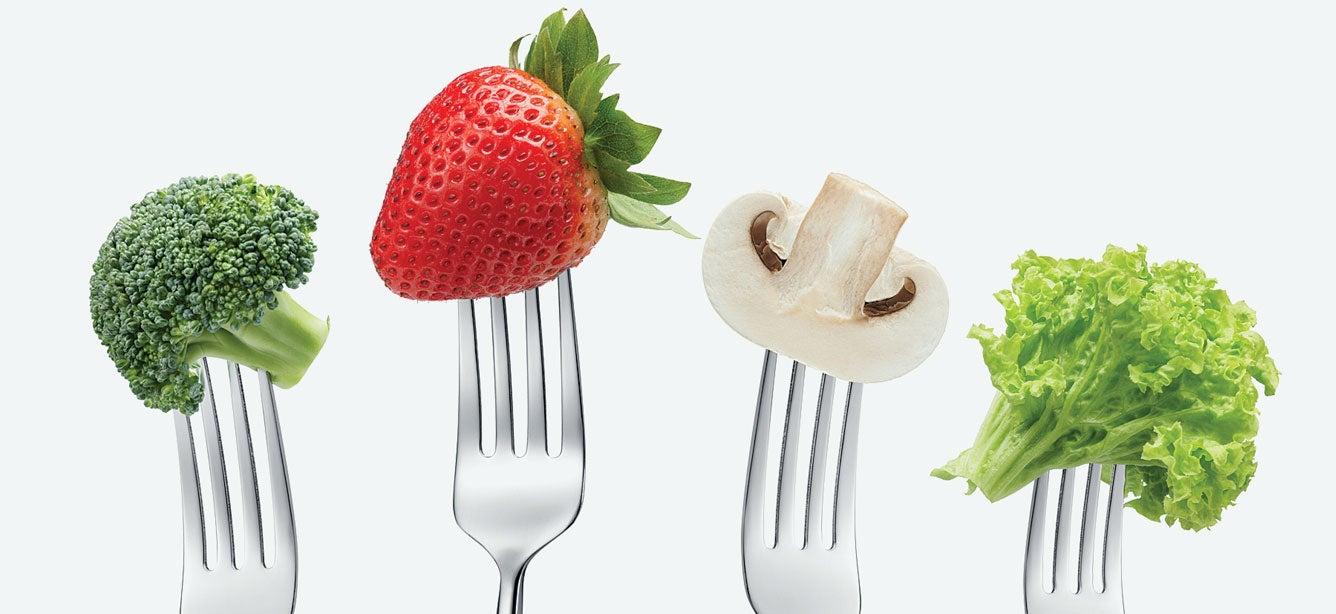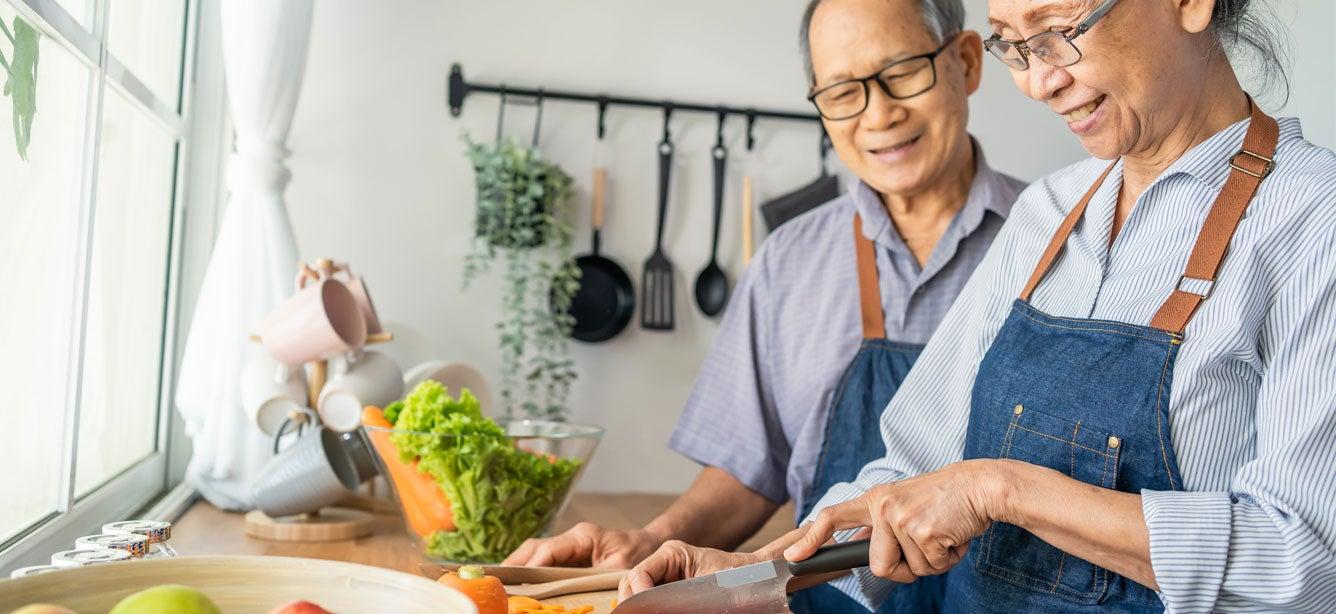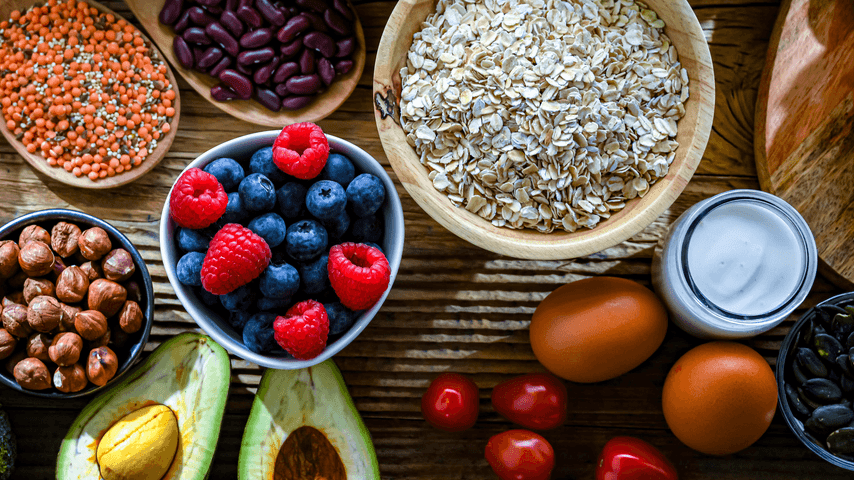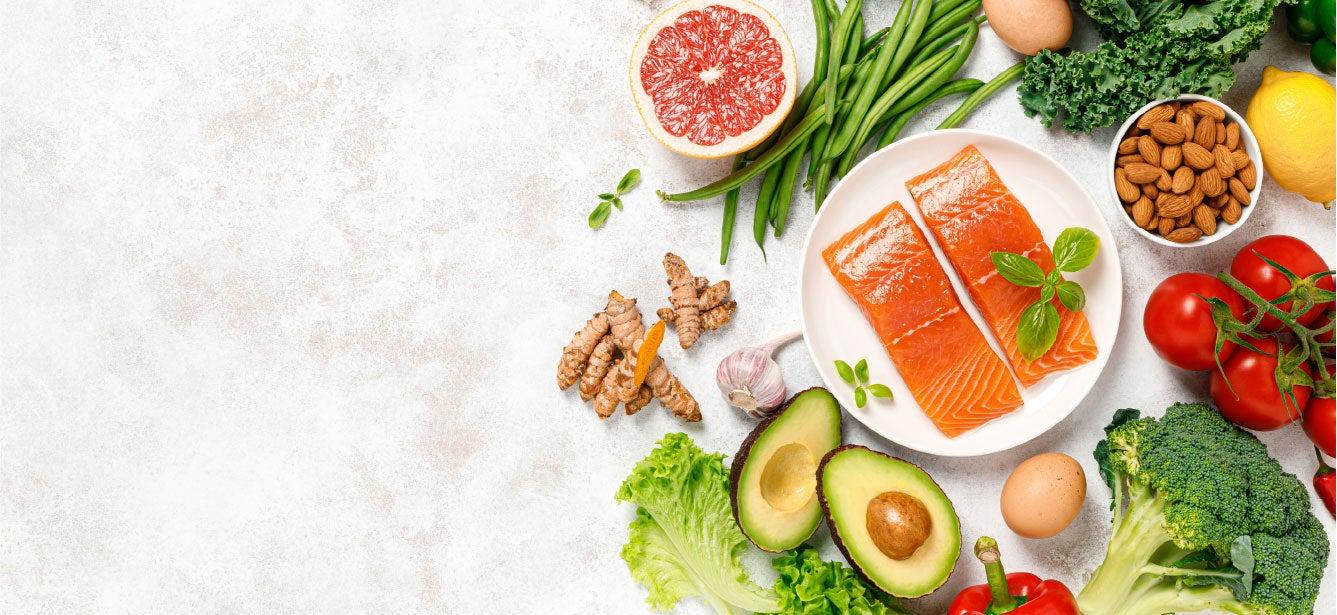
Related Topics
Nutrition is important at all ages, but it's especially critical as we grow older and our bodies change. Muscle mass naturally declines with the passing years and we may absorb nutrients less efficiently. Around the age of 60, metabolism starts to slow down, meaning we burn calories at a lower rate.
Eating a balanced diet helps us maintain strength, energy, cognitive functioning, and a healthy weight, while also supporting immunity and lowering our risk of chronic disease. All of this can help us stay active and independent for longer.
The 2020-2025 Dietary Guidelines for Americans focus on nutrition for healthy living at every stage—from infancy through older adulthood (age 60 and older). The rules of thumb below provide a practical framework for getting the nourishment you need every day.
6 tips to help you eat well and improve your nutrition as you get older
- Know what a healthy plate looks like. Include more fruit, vegetables, whole grains, and dairy in your diet. Another tip that's incrediblly important, especially for your health, according to Gretchen Dueñas-Tanbonliong, Associate Director of Health and Wellness at NCOA and a registered dietitian nutritionist (RDN), offers this advice: “Personalize your eating plan—especially if you have special dietary needs. An RDN can work with you to create a customized plan that helps you meet your health and nutrition goals.”
- Look for important nutrients in the foods you eat. Where possible, limit your consumption of added sugars, saturated fat, and sodium. Flavoring foods with herbs and spices can help you lower your intake of sugars, salt, and saturated fats. Eat enough protein to maintain muscle mass—which decreases as we grow older (learn the best protein sources for older adults). Make sure have you get adequate amounts of potassium, calcium, vitamin D, dietary fiber, and vitamin B12.
- Read nutrition labels to be a smart shopper. The U.S. Food and Drug Administration (FDA) has a tool to help you make informed food choices that can have positive effects on your health and wellness. According to the FDA, too much or too little nutrients could increase your risk of certain chronic diseases, such as heart disease and high blood pressure. Meal delivery services can handle a lot of the work for you, and may be helpful for older adults looking for pre-portioned, balanced meals that are easy to make and delivered directly to their doorsteps.
If you struggle to prepare meals, meal delivery services can do the heavy lifting for you. These services, like Meals on Wheels, offer pre-portioned, balanced meals that are delivered directly to your doorstep. - Use recommended servings (and pay close attention to calories when you can). In general, women age 60+ need about 1,600-2,200 calories per day, while men require about 2,000-2,600 calories per day. Your specific calorie intake requirement depends on your age, sex, height, weight, and physical activity level. The USDA's MyPlate Plan shows your food group targets, along with what and how much to eat within your calorie allowance.
- Stay hydrated. Adults 60 and older are at greater risk for dehydration for a number of reasons, including natural drops in thirst levels and body composition changes. Drinking plenty of water is a simple yet vital part of maintaining good health, especially as we get older. Other good beverage choices include unsweetened fruit or low sodium vegetable juice, low-fat (or fat-free) milk, or fortified soy beverages. Fluids can also be obtained from foods containing water, such as soup and fruits and vegetables.
- Discover how the Supplemental Nutrition Assistance Program (SNAP) can help stretch your food budget. SNAP puts a healthy diet in easier reach for older adults who have low income. Recent updates to the SNAP program mean that a healthier diet may be in better reach for you. See what foods qualify for purchase under the plan. And if getting to the grocery store is difficult, you can use your SNAP benefits with most online grocery delivery services (though delivery fees may not be covered). Learn more about SNAP and other benefits programs that can help you age well at NCOA's BenefitsCheckUp.org.
Are you struggling to eat healthy due to low appetite or problems chewing food? Get tips for overcoming everyday nutrition challenges facing older adults.
Download our simple infographic below and share with others during National Nutrition Month (and beyond). WHen you learn to make informed food choices, it's easier to develop smart eating habits that support your long-term health and well-being.




